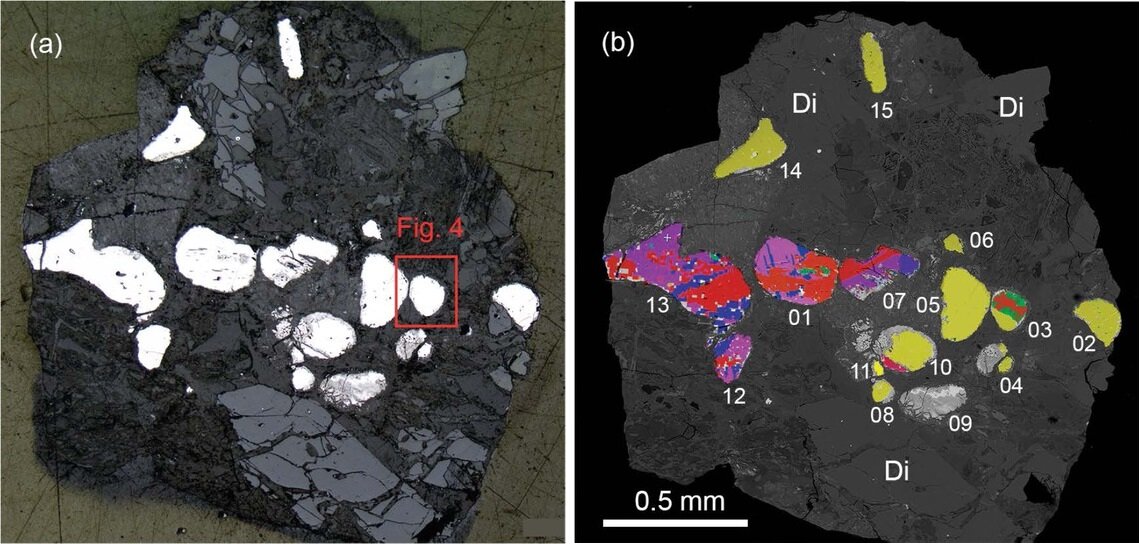
A general view of the rock with allabogdanite–barringerite association. Credit: Mineralogical Society of AmericaAllabogdanite was first discovered in the Onelloa small-sized iron meteorite, which was found in the gold placer at Bolshoi Dolguchan in Eastern Yakutia. The mineral is a phosphide, a group of compounds that contain phosphorus in a negatively oxidation state. Alla Bogdanova, a crystallographer, gave it its name. Allabogdanite was identified in numerous iron meteorites since then. This is the first time that the mineral has been confirmed on Earth. Allabogdanite was discovered during a systematic examination of the Dead Sea region's terrestrial phosphides.Sergey Britvin (the main author of this article), is a professor at St Petersburg University's Department of Crystallography. It was discovered that terrestrial allabogdanite can be formed at pressures exceeding 25 gigapascals, which corresponds to approximately. 250 kbar. 250 kbar. The discovery of terrestrial allabogdanite was made in the Negev Desert, Israel. This is where natural cyclophosphates were discovered recently.Sergey Britvin stated that allabogdanite was discovered in the historic region of South Levant, Middle East. This raises many questions about the formation conditions of these surficial rocks.The Mottled Zone or the Hatrurim Formation. (a) Outcrops of Mottled Zone (brown areas) in the South Levant. The Hatrurim basin (Israel), and the Daba–Siwaqa (Jordan) are the largest territories. (b) The Hatrurim Basin, Negev Desert Israel, and Halamish Bed -- where are allabogdanite associations. Credit: Mineralogical Society of AmericaAllabogdanite was found in meteorite nearly 20 years ago. However, it wasn't until 2008 that it was determined that the mineral belonged to the high pressure indicators. Current research shows that terrestrial allabogdanite can be classified as a metastable, high-pressure phase. It formed from a transformation of another mineralbarringerite and was kept under normal conditions by quenchingan abrupt withdrawal of temperature and pressure.View from the Hatrurim Basin in Israel, East. Credit: Mineralogical Society of AmericaThis excludes allabogdanite formations as intermediate phases from elements under atmospheric pressure. This raises many key questions about the origin of the rocks in the Mottled Zone. The South Levant has not yet provided any evidence of large meteorite collisions, or rocks with Earth's mantle origin. These evidence may have been erased from the Earth's surface by later geological erosion processes. Professor Sergey Britvin stated that the discovery of allabogdanite is a reason to continue research in this area.Explore more A new mineral discovered on the moon could help explain the Earth's mantle.More information: Sergey N. Britvin and colleagues, Discovery of terrestrial alabogdanite, Fe,Ni2P and the effects of Ni and Mo substitutions on the barringerite–allabogdanite high pressure transition, American Mineralogist (2020). Sergey N. Britvin and colleagues, Discovery of terrestrial alabogdanite, (Fe.Ni)2P and the effect of Ni- and Mo substitutions on the barringerite–allabogdanite-high-pressure transition, (2020). DOI: 10.2138/am-2021-76221
